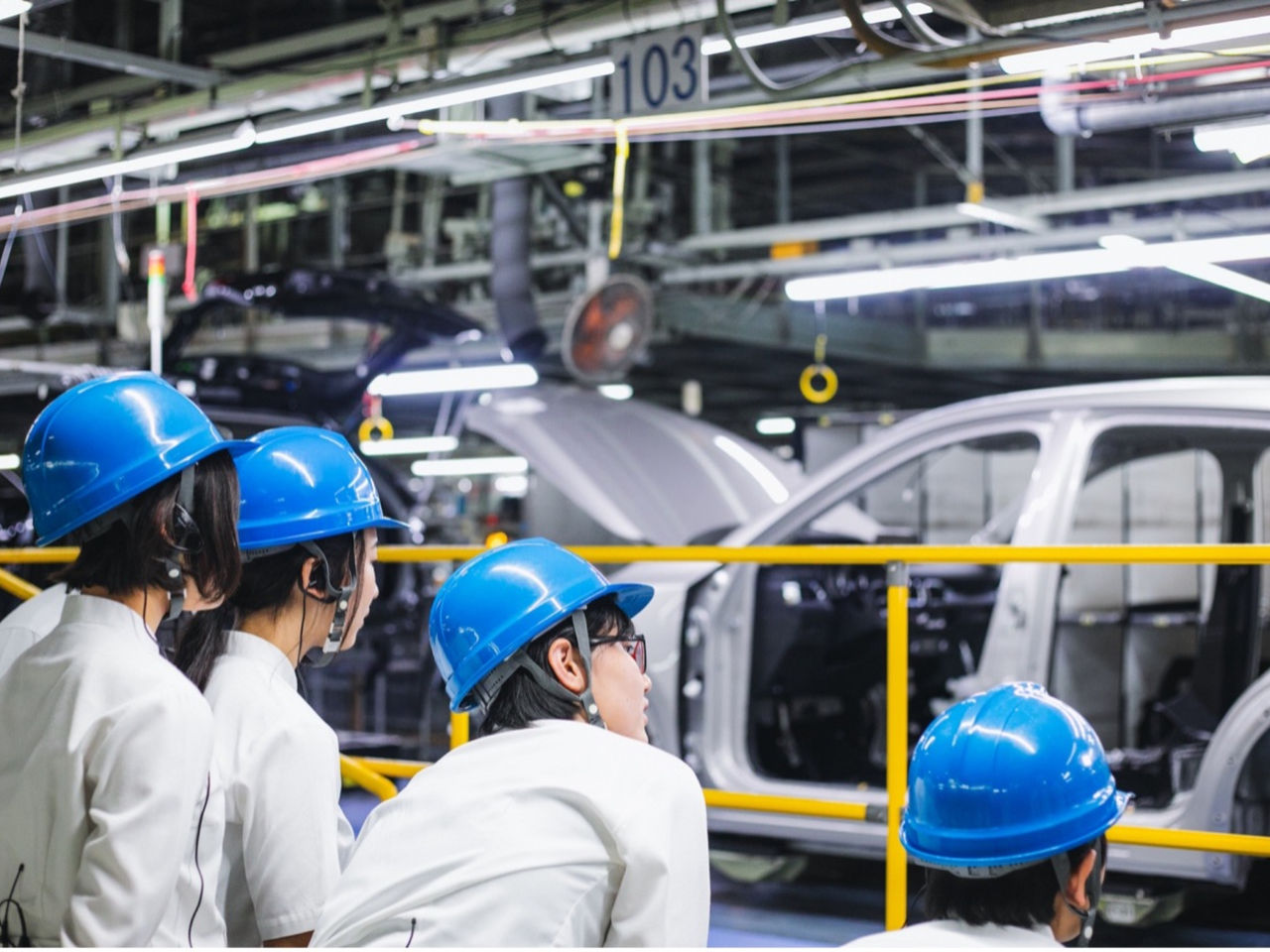“I’d like to learn more about sustainability at Mazda, and how you’re making clean energy,” began the email. “As a young person, I’m keen to learn what I can do in this area to protect my future.”
Can Cars Be Truly Eco-Friendly: Four High School Students Ask Mazda about the Future of Mobility
It all began with an email.
The sender was Runa Irie, a student from a high school in Hiroshima. After meeting with Mazda at Sustainable Brands Tokyo in February 2024, Irie was keen to learn more about our environmental initiatives.
Inspired by her enthusiasm, we invited Irie and three of her classmates to take a tour and share some of the exciting developments in environmental innovations at Mazda. Over the course of two days, the high school students visited Mazda’s plants and partner companies to learn how we’re approaching sustainability.
The four young people shared concerns about the global environment, and a future where the advancements of technology could make many jobs obsolete. What answers could we provide at Mazda? And could we help them feel positive about the future?
Follow the students in this four-part series of articles and videos as they discover Mazda’s commitment to creating a carbon-neutral society—and find out what they really thought about their behind-the-scenes visit.
The four environmentally-conscious high school students who took part in the tour. From left: Runa Irie, Haruka Takahashi, Minato Hashimoto, Riyo Tanabe.
- Can Microscopic Algae Power Cars? Going Carbon Neutral with Microalgae Biofuel
- The Design AI Can’t Match: Oyster Shell Composite Plastic in Mazda Iconic SP
- Can Car Manufacturing Go Green? Visiting Mazda’s Head Office and Plants
- Concerned or Confident About the Future? Roundtable with the Four High School Students
Can Microscopic Algae Power Cars? Going Carbon Neutral with Microalgae Biofuel
Runa Irie plans to study bioenergy. She reached out to Mazda after learning about our microalgae* fuel development project.
“Every year, Japan is getting hotter. We need to reduce CO₂ to tackle global warming, but even though I try to do what I can, it doesn’t seem to make any difference,” says Irie. “We’re dependent on energy every day. The only real solution is to make that energy clean. It would be amazing if microalgae are the answer—but I wonder how long before this technology will be ready for real-world application.”
Mazda, while being a car manufacturer, has spent years researching clean fuels. As Irie learns about Mazda's collaboration with Hiroshima University to make microalgae-based biofuel a reality, what will her impression be?
* Microalgae are a type of microscopic algae found as phytoplankton in aquatic environments such as freshwater, seawater, and sediments. They range in size from 1 millimeter to 1 micrometer.
The Design AI Can’t Match: Oyster Shell Composite Plastic in Mazda Iconic SP
Riyo Tanabe, who one day hopes to be an architect, worries about a possible future where AI means design is no longer an expert human endeavor. “That's why I'm so interested in designs that only humans can create, like those at Mazda,” she explains. Tanabe is also passionate about sustainability, and has recently begun to rethink sustainable architecture and design.
The Mazda Iconic SP, a compact sports car concept unveiled in 2023, incorporates car components made from a composite plastic derived from recycled Hiroshima oyster shells. As they watch the process firsthand, the four high school students consider how human creativity can deliver uniquely sustainable design solutions.
Can Car Manufacturing Go Green? Visiting Mazda’s Head Office and Plants
Before the tour, students Haruka Takahashi and Minato Hashimoto shared their concerns. “The impact of cars on the environment is not just the CO₂ emissions,” says Takahashi. “There’s also the CO₂ released during the manufacturing process.”
“Across the world, everywhere seems to be shifting to electric vehicles, yet Mazda doesn’t appear to be investing much energy into this technology. But, I’ve also heard that EV battery production emits CO2, so I’m no longer sure which is better,” adds Hashimoto.
The group of students take a tour of Mazda facilities, from the Mazda Museum, to the onsite power plant (Energy Center), paint shop, assembly lines, and final inspection plant. As they watch how a single car is made, they discover how Mazda's long-standing initiatives for making small changes add up to big impact in energy saving.
Concerned or Confident About the Future? Roundtable with the Four High School Students
Over two days, the four high school students got an inside look at Mazda's sustainability initiatives. How did this experience change their view of Mazda? What lasting impression did it leave? And did it change how they feel about the future?












